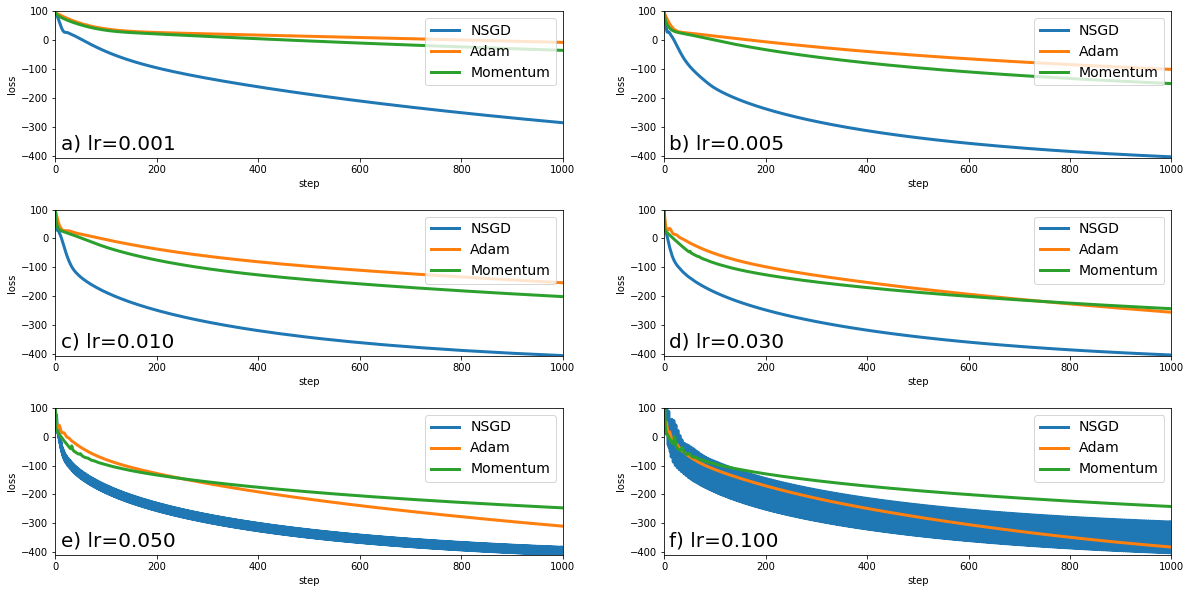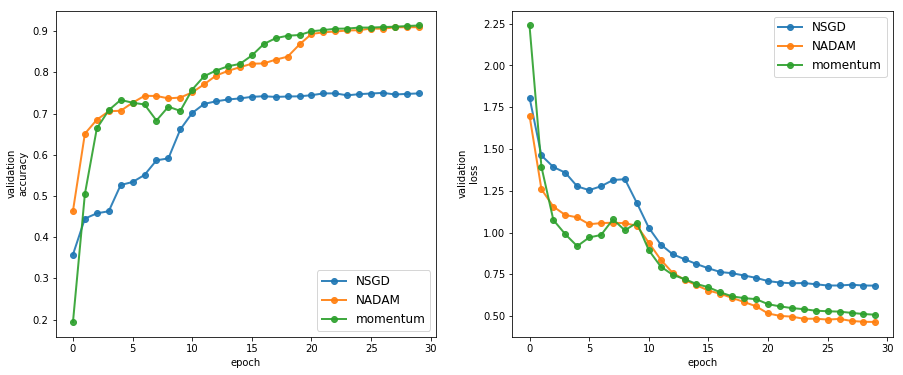https://github.com/titu1994/keras-normalized-optimizers
Wrapper for Normalized Gradient Descent in Keras
https://github.com/titu1994/keras-normalized-optimizers
Last synced: 6 months ago
JSON representation
Wrapper for Normalized Gradient Descent in Keras
- Host: GitHub
- URL: https://github.com/titu1994/keras-normalized-optimizers
- Owner: titu1994
- License: mit
- Created: 2018-06-08T22:43:45.000Z (over 7 years ago)
- Default Branch: master
- Last Pushed: 2018-06-09T21:14:20.000Z (over 7 years ago)
- Last Synced: 2025-03-25T05:34:06.919Z (7 months ago)
- Language: Jupyter Notebook
- Size: 1.11 MB
- Stars: 17
- Watchers: 3
- Forks: 8
- Open Issues: 1
-
Metadata Files:
- Readme: README.md
- License: LICENSE
Awesome Lists containing this project
README
# Keras Normalized Optimizers
[](https://travis-ci.org/titu1994/keras-normalized-optimizers)
Keras wrapper class for Normalized Gradient Descent from [kmkolasinski/max-normed-optimizer](https://github.com/kmkolasinski/deep-learning-notes/tree/master/max-normed-optimizer), which can be applied to almost all Keras optimizers. Partially implements [Block-Normalized Gradient Method: An Empirical Study for Training Deep Neural Network](https://arxiv.org/abs/1707.04822) for all base Keras optimizers, and allows flexibility to choose any normalizing function. It does not implement adaptive learning rates however.
The wrapper class can also be extended to allow Gradient Masking and Gradient Clipping using custom norm metrics.
Wrapper classes :
- `NormalizedOptimizer`: To normalize of gradient by the norm of that gradient.
- `ClippedOptimizer`: To clip the gradient by the norm of that gradient. Note: Clips by Local Norm only !
# Usage
## Pre-defined normalizations
There are several normalization functions available to the `NormalizedOptimizer` class which wraps another Keras Optimizer. The available normalization functions are :
- l1 : `sum(abs(grad))`. L1 normalization (here called max-normalization).
- l2 : `sqrt(sum(square(grad)))`. L2 normalization (Frobenius norm) is the **default normalization**.
- l1_l2 : Average of `l1` and `l2` normalizations
- avg_l1 : `mean(abs(grad))`. Similar to L1 norm, however takes average instead of sum.
- avg_l2 : `sqrt(mean(square(grad)))`. Similar to L2 norm, however takes average instead of sum.
- avg_l1_l2 : Average of `avg_l1` and `avg_l2` normalizations.
- max : `max(abs(grad))`. Takes the maximum as the normalizer. Ensures largest gradient = 1.
- min_max : Average of `max(abs(grad))` and `min(abs(grad))`.
- std : Uses the standard deviation of the gradient as normalization.
```python
from keras.optimizers import Adam, SGD
from optimizer import NormalizedOptimizer, ClippedOptimizer
sgd = SGD(0.01, momentum=0.9, nesterov=True)
sgd = NormalizedOptimizer(sgd, normalization='l2')
adam = Adam(0.001)
adam = ClippedOptimizer(adam, normalization='l2', clipnorm=0.5)
```
## Custom normalizations
Apart from the above normalizations, **it also possible to dynamically add more normalizers at run time**. The normalization function must take a single Tensor as input and output a normalized Tensor.
The class method `NormalizedOptimizer.set_normalization_function(func_name, normalization_fn)` can be used to register new normalizers dynamically.
However, care must be taken to register these custom normalizers prior to loading a Keras Model (ex : `load_model` will fail otherwise).
```python
from keras.optimizers import Adam
from optimizer import NormalizedOptimizer
from keras import backend as K
# dummy normalizer which is basically `avg_l1` normalizer
def dummy_normalization(grad):
norm = K.mean(K.abs(grad)) + K.epsilon()
return norm
# give the new normalizer a name
normalizer_name = 'mean`
NormalizedOptimizer.set_normalization_function(normalizer_name, dummy_normalization)
# now these models can be used just like before
sgd = SGD(0.1)
sgd = NormalizedOptimizer(sgd, normalization=normalizer_name)
adam = Adam(0.001)
adam = ClippedNormalization(adam, normalization=normalizer_name, clipnorm=0.5)
```
# Results for `NormalizedOptimizer`
## Convex Optimization
We optimize the loss function :
```
L(x) = 0.5 x^T Q x + b^T x
```
where `Q` is random positive-definite matrix, `b` is a random vector
### **Normalized SGD (NSGD)**
------------

### **Normalized Adam (NADAM)**
------------

We also inspect how the initial choice of learning rate affects Normalized Adam for a convex optimization problem below.
------------

## Deep MLP
Model is same as in the Tensorflow codebase [kmkolasinski/max-normed-optimizer](https://github.com/kmkolasinski/deep-learning-notes/tree/master/max-normed-optimizer)
```
* 30 dense layers of size 128.
* After each layer Batchnormalization is applied then dropout at level 0.2
* Small l2 regularization is added to the weights of the network
```
------------
### **Training Graph**

------------
### **Testing Graph**

## CIFAR-10
The implementation of the model is kept same as in the Tensorflow repository.
------------
### **Train Graph**

------------
### **Testing Graph**

# Requirements
- Keras 2.1.6+
- Tensorflow / Theano (CNTK not tested, but should work)